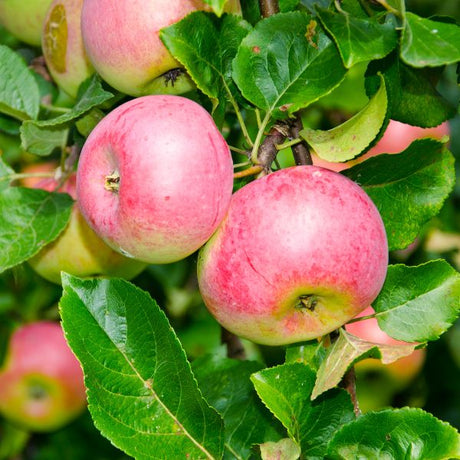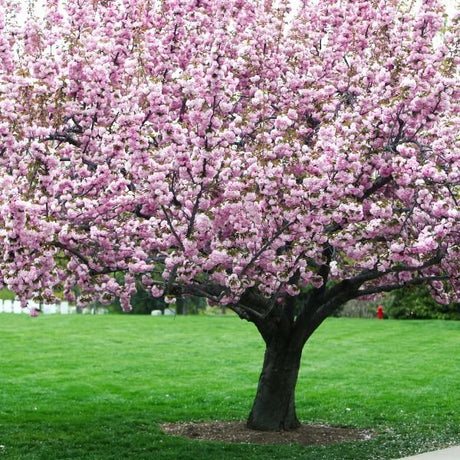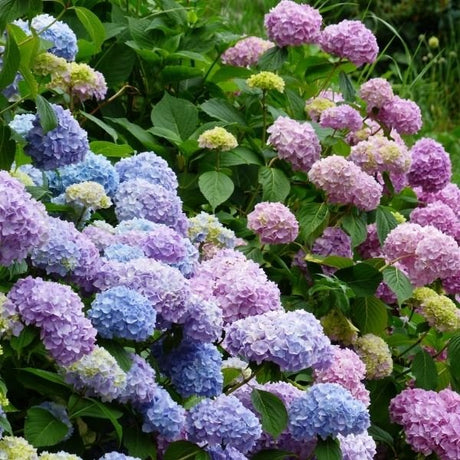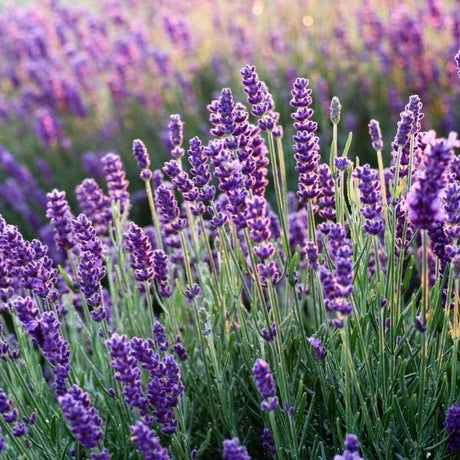Owari Satsuma Mandarin Tree
Citrus reticulata 'Owari'
- Stay Protected with Plant Sentry ™
Owari Satsuma Mandarin Tree - #5 Container is backordered and will ship as soon as it is back in stock.
Plant Sentry™
Plant Sentry™
Plant Sentry is designed to protect both consumers and the nursery trade from invasive plant pests and diseases. Sites that display the Plant Sentry protection badge are protected from consumers buying and nurseries shipping material carrying invasive pests and diseases.
This proprietary eCommerce software prevents the shipment of a restricted plant to each state. The Plant Sentry system includes a shipment certification program. The Plant Sentry Compliance Officer works closely with NatureHills.com and each nursery or fulfillment center to ensure only compliant plants are sold to customers.
Click Here to learn more

Delivery and Shipping
Delivery and Shipping
Shipping
To obtain a more accurate shipment time-frame, simply enter your zip code in the “Find Your Growing Zone” box to the right. Our plants are grown all over the country and lead time on items may be different because of this. Once your order is placed, you will also receive the specific shipment time-frame information as part of your order confirmation. Once an item ships, you will receive shipment notification and tracking numbers, so you can follow along while your plant travels to your doorstep. We use FedEx, UPS, or USPS at our discretion.
Due to winter weather we have put a hold on shipping to the areas shown below in grey. You can still order now and we will ship the plant to you during an appropriate time for your zone.
Standard Shipping Rates
At Nature Hills we handle, package and ship the products you order with the utmost care to ensure healthy delivery. Shipping and handling charges are calculated based on the tables below. Please note that some items include an additional handling surcharge, these will be noted on the item's product page.
| From | To | S&H |
|---|---|---|
| $0 | $19.99 | $24.99 |
| $20 | $49.99 | $29.99 |
| $50 | $69.99 | $34.99 |
| $70 | $99.99 | $39.99 |
| $100 | $129.99 | $44.99 |
| $130 | $149.99 | $48.99 |
| $150 | $150+ | Approx 28% |
Click here to see our full rates
Understanding Plant Options
Nature Hills offers plants in two main formats:
- Container Plants: Grown in pots with soil, sized by container volume and plant age
- Bare Root Plants: Dormant plants without soil, sized by height measurements
Container Plant Sizes
Container sizes indicate plant age and growing capacity rather than liquid volume equivalents. Our containers follow industry-standard nursery "trade gallon" specifications, which differ from standard liquid gallon measurements.
Young Plants (6 months to 18 months old)
| Container Size | Actual Volume | Metric Equivalent |
|---|---|---|
| 2" x 2" x 3" | 0.18 - 0.21 dry quarts | 0.20 - 0.23 dry liters |
| 4" Container | 0.31 - 0.87 dry quarts | 0.35 - 0.96 dry liters |
| 4.5" Container | 0.65 dry quarts | 0.72 dry liters |
| 6" Container | 1.4 dry quarts | 1.59 dry liters |
| 1 Quart | 1 dry quart | 1.1 dry liters |
| 5.5" Container | 1.89 dry quarts | 2.08 dry liters |
Established Plants (18 months to 2.5 years old)
| Container Size | Actual Volume | Metric Equivalent |
|---|---|---|
| 2 Quart | 2 dry quarts | 2.2 dry liters |
| #1 Container | 2.26 - 3.73 dry quarts | 2.49 - 4.11 dry liters |
| 5" x 5" x 12" | 3.5 - 4.3 dry quarts | 3.85 - 4.74 dry liters |
Mature Plants (2-4 years old)
| Container Size | Actual Volume | Metric Equivalent |
|---|---|---|
| #2 Container | 1.19 - 1.76 dry gallons | 5.24 - 7.75 dry liters |
| #3 Container | 2.15 - 2.76 dry gallons | 8.14 - 12.16 dry liters |
Large Plants (3-5 years old)
| Container Size | Actual Volume | Metric Equivalent |
|---|---|---|
| #5 Container | 2.92 - 4.62 dry gallons | 12.86 - 20.35 dry liters |
| #6 Container | 5.25 - 6.01 dry gallons | 23.12 - 26.42 dry liters |
| #7 Container | 5.98 - 6.53 dry gallons | 26.34 - 28.76 dry liters |
Bare Root Plants
Bare root plants are sold by height from the root system to the top of the plant. Plants may exceed minimum height requirements.
Common Sizes:
- Trees: 1 foot, 2 feet, 3 feet, 4 feet, 5 feet, 6 feet
- Shrubs & Perennials: 1 foot, 18 inches, 2 feet
Important Notes
Container Volume Specifications
- Trade Gallon Standard: Our containers follow industry-standard "trade gallon" specifications established by the American National Standards Institute (ANSI Z60.1) for nursery stock
- Volume Variations: Actual soil volume may vary due to plant root systems and growing medium settlement
- Age Indicators: Container size primarily indicates plant age and maturity rather than liquid volume equivalents
Growing Conditions
- Plant size can vary based on variety and growing conditions
- Container size helps indicate plant maturity and establishment level
- Larger containers generally mean more established root systems and faster landscape establishment
Seasonal Availability
- Bare root plants are available seasonally when dormant
- Container plants are available throughout the growing season
- Specific varieties may have limited availability in certain sizes
Questions?
For questions about specific plant sizes or availability, please contact our plant experts who can help you choose the right size for your landscape needs.
Plant Highlights
Owari Satsuma Mandarin Tree highlights at a glance!
Specifications
Specifications
-
Brand
-
Botanical Name
-
Growing Zones
-
Mature Height
-
Mature Spread
-
Sun ExposureFull Sun
-
Moisture
-
Soil
-
Growth RateMedium
-
Flower Color
-
Fall Color
-
Pollinator Friendly
-
Pollinator Required
-
Fragrant
-
Pruning Time
-
Bloom PeriodLate Spring
-
Harvest Time
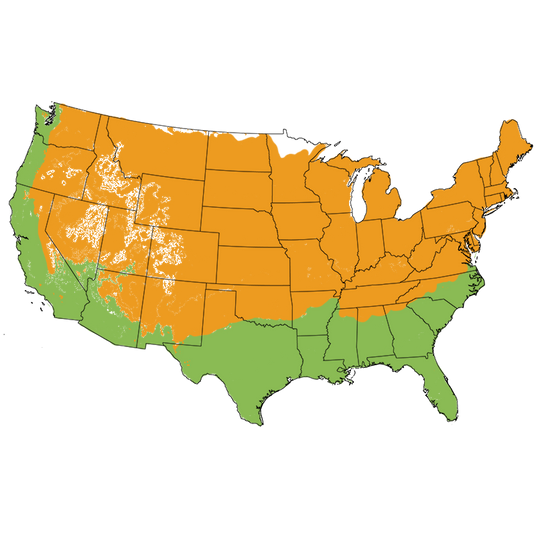
Growing Zones outdoor 8-11; patio 4-11
The Owari Satsuma Mandarin is a gorgeous glossy broadleaf evergreen tree that produces excellent fruit!
Think what it would be like to walk out into your yard and pick a fresh Mandarin orange off your own tree. Imagine that first gush of juice, still warm from the sun's rays, as it flows over your tongue. It would do well in your yard as a specimen plant, or in a container near a patio.
Nothing can compare to that zesty, sugary-sweet flavor. It's an experience like no other, and the Owari Satsuma (Citrus reticulata 'Owari') is the best Mandarin tree to bring that experience to your own backyard.
Owari Satsuma Mandarin has a wonderful display of bright, fragrant white flowers in the spring. The Owari Satsuma Mandarin tree is obviously easy to care for and provides excellent Mandarin Oranges. The succulent, sweet fruit ripens in late December and stores well.
The Owari Satsuma Mandarin is a beautiful broadleaf evergreen plant and the fruit makes it very ornamental! Fantastic edible landscaping trees, any sunny location in your front or backyard, or in containers on your porch or patio, will work perfectly for these smaller trees!
It's not only delicious but also healthy...and even peels easily. You won't find another orange anywhere that is easier to peel or less messy to eat. It's especially great for kids who can manage the orange themselves with no fuss or muss.
How to use the Owari Satsuma Mandarin in the Landscape
The dark green, evergreen foliage fills out its rounded nature well, giving it a vibrant, healthy appearance year-round. Its flowers are a delicate white bloom, and their fragrance will carry easily to the bees and butterflies who will love to stop by for a visit.
In warmer growing zones, these Citrus Trees can be planted in the yard and would make the loveliest of privacy hedges. Keep the limbs intact sweeping the ground for easy picking and lush property division and screening.
Plant one as a focal point in your garden by pruning it into a specimen tree form. A great variety for container growing, enjoy the Owari Satsuma tree on your deck or in the garden in full sun. You'll need to move it indoors to protect the delicate root system from freezing temperatures during the colder winter months!
- Seedless Juicy Fruit & Easy to Peel
- Zesty, Sugary-Sweet!
- Pollinator Friendly Fragrant White Blossoms
- Gorgeous, Evergreen Foliage
- Ripens in December
- Container Ready
- The Best Backyard Mandarin
#ProPlantTips for Care
The Owari Satsuma Mandarin is the hardiest of all the Mandarin trees. It's disease and pest-resistant and cold-tolerant (for brief periods of chill). It can easily grow in a container if you prefer, and handle any pruning necessary to keep it a preferred shape and size.
Plants in containers will not need much water during their dormant winter indoors. Citrus trees will not tolerate standing water, so please don't overwater and ensure their pots have several drainage holes.
For lush plants with dark green leaves and plenty of fruit, use a light hand with fertilizers. For plants that aren't holding on to fruit, consider applying organic citrus fertilizer monthly in spring and again in summer during the growing season.
Feed planted Satsuma Mandarin container plants again right before you take them outside for the summer. Feed Mandarin planted in the ground once again during the dormant season.
- Full Sun
- Low Moisture Needs Once Established
- Somewhat Cold Tolerant
- Insect & Disease Resistant
- Prune Early Spring
You can't do better than an Owari Satsuma Mandarin tree. Plant several today and begin enjoying its exquisite beauty and mouth-watering fruit.
Our trees are always in high demand, and we expect this crop of Citrus Trees to be very popular. Order now before they sell out and enjoy the benefits of growing your own Citrus fruit anywhere in the U.S. Hurry, quantities are limited - So order now at NatureHills.com!
Protecting Container Citrus From Cold
If you're growing these tropical trees in the ground in the lowest of their favored growing zones, they need to be planted in a sheltered spot to avoid the worst of the chill. If a spot like that is unavailable then you are better off planting in a large, deep container.
This Citrus variety naturally grows successfully in marginal Citrus areas (USDA zones 8 to 4). But Citrus trees grown in these zones should be grown in containers and brought indoors before the wintertime.
In cooler growing zones, begin slowly acclimating your tree indoors in the early fall or moving them into a protected location, eventually moving your tree inside in bright indirect sun for the winter if the temperatures in your area ever dip below that 40°F range.
In spring, reverse this process and begin acclimating your tree to again be back out in the full sun all summer. This reduces stress and leaf drop.
Frost Hardy Owari Satsuma Mandarin
The Owari Mandarin has been a favorite for over 700 years. The name comes from the region once called the Owari Province, located in the western half of what now is Aichi Prefecture, Japan. This is where Owari was thought to originate from, although there is some dispute over this being the place of origin. Some believe that Owari came first from somewhere inside China.
It was first exported from the Satsuma Province in Kyushu, Japan to Florida, in 1876, by George Hall. The addition of the name Satsuma, however, came a few years later. The United States Minister to Japan, General Van Valkenberg's wife had trees sent home to the United States under the name Satsuma, named after the region they were raised in.
By the early 1900s, there were reported to be over 1 million Owari Satsuma Mandarin trees imported from Japan and planted along the southern seaboard from Florida to Texas. Due to the hardiness of the Owari Satsuma, it took to these regions well. However, freezes in 1911 and hurricanes in 1915 caused considerable damage to these new orchards. After some adjustments needed in frost management, the reports of the success of the variety spread fast.
As early as the 1880s, Welsh farmers established Mandarin orchards in the foothills of the Sierra Nevadas around the town of Penryn in Placer county. These plantings were some of the earliest in California.
With a very cold winter climate, good air drainage off the Sierras provided the perfect frost control and after the devastating losses of pears from Fire Blight in 1964, the growers replaced the struggling pears with the Owari Satsuma's. The region is renowned for its high-quality fruit and is still being farmed successfully today.





